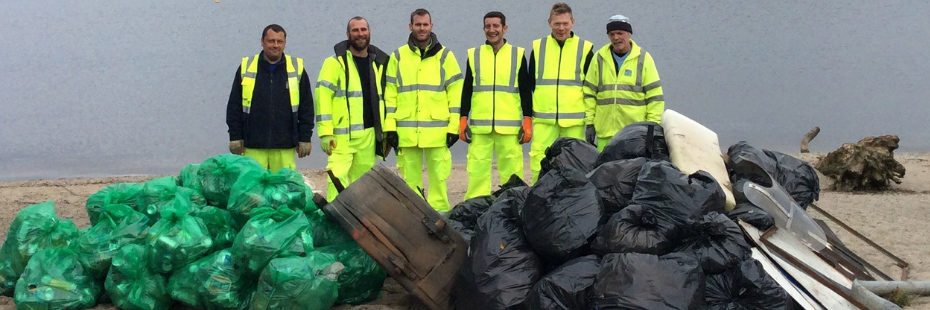
Spring clean in the National Park
Two months into the role, Litter Prevention Manager, Nik Turner, discusses our plans for a National Park-wide Spring Clean.
Since starting my new role, I have been getting to grips with litter within Loch Lomond & The Trossachs National Park, understanding who is responsible for what, what activities are already taking place and uncovering the “grot-spots” where litter is a real issue.
Littering isn’t a problem unique to the National Park. Indeed, environmental charity Keep Scotland Beautiful warns that, across Scotland, littering is the worst that it has been in a decade. This fact is proof that litter is an extremely difficult problem to solve. It is a complex behaviour, influenced by many factors across individual and social contexts, and impacted by material infrastructure. There isn’t a “silver bullet” that anyone has found to fix it.
The problems that we face within the National Park are symptomatic of this wider issue. However, when you add into the mix complicating factors like diverse landownership, rural sites that can only be cleaned by hand, huge influxes of visitors in summer months and the sheer scale of the area, you begin to fully understand how difficult it is to tackle.
Despite these complexities we are determined to lead the way in the war against litter and it is one of our key priorities within our Five Year Plan.
But, this is not a battle we can fight alone. Effective interventions and long term change will only happen when we work with stakeholders from across the National Park to redouble our efforts to prevent littering in the first place. This, I’m sure you can appreciate, is not something that can be achieved overnight.
So, whilst there are many long term aspirations to develop and work upon, we have the opportunity now to seize the Spring Clean campaign to kick-start our litter prevention focus.
Over the whole of April and May, staff, volunteers, communities, businesses and partners across the entire National Park are rolling up their sleeves, stocking up on bin bags and dusting off their litter pickers. All of us are coming together to make the National Park spick and span to send a clear message: littering is not acceptable within our beautiful landscape.
You may already have seen the coverage of our joint A82 Clean Up with Argyll and Bute Council, which was the first in a series of events we’re hosting. We’re leading six more Clean Up events across the National Park, working with our volunteers to clear as much litter from popular sites as possible. Our staff are also getting stuck in and we’re hoping to have everyone (yes, over 100 of us) out on a mass litter picking event in May.

Staff from the National Park and Argyll and Bute Council with just some of the litter that was collected beside the A82
We are supporting communities to take action; from Drymen Community Council’s Clean Up to Cleaner Callander’s work. Partners are joining in too; from Friends of Loch Lomond & The Trossachs Loch Lubnaig Make A Difference Day, to Scottish Natural Heritage raising awareness on the lasting and damaging effects litter has on wild places.
We’re also working with Keep Scotland Beautiful to trial new forms of messaging, and at some of our carparks you will soon see new signage in place, which will be evaluated to understand which works best.
This is just a snapshot of the many projects we have planned over the coming months. We mean business and we’re starting as we mean to go on.
So join us! Let us know if you’re taking part in a Clean Up already, or if you’re visiting the National Park over the Easter break then why not try out a #2MinuteCleanUp? Make sure to tag us on social media so we can share successes @lomondtrossachs. Together, we can make sure that litter is no longer a blight on our landscape.

